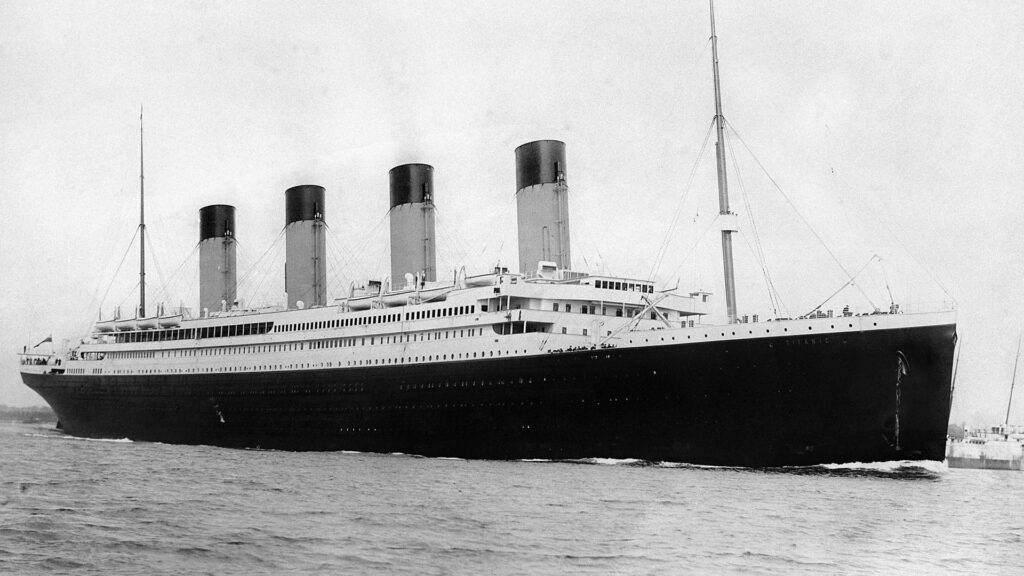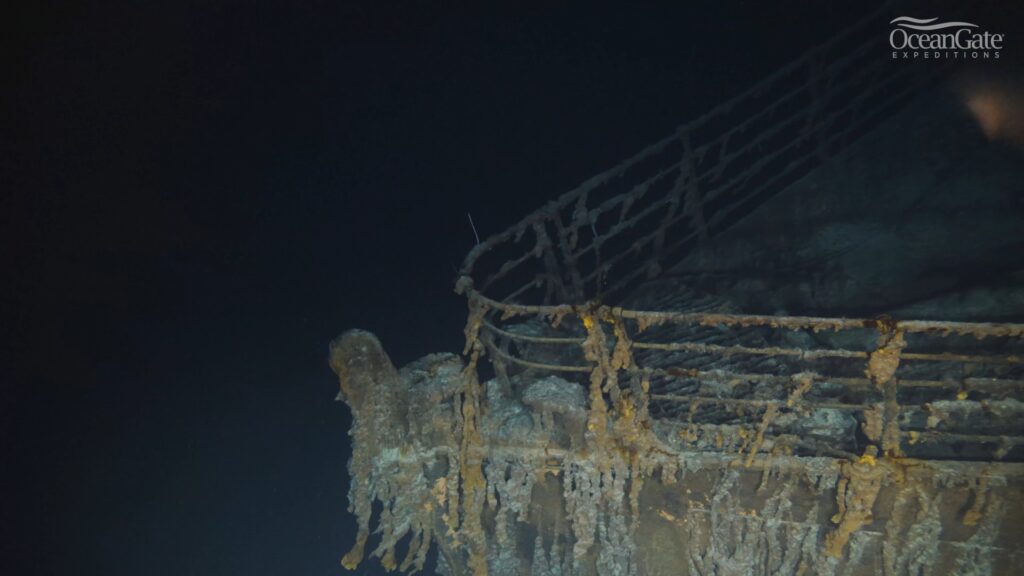111 years after its sinking, the disappearance of the liner Titanic in the North Atlantic continues to interest the public – evidenced by the incredible success of James Cameron’s film in 1998. Expeditions are still carried out there, to see it up close.
It’s a question many of us ask ourselves these days: Why did super-rich men risk death to venture to the bottom of the sea in a cold and cramped “experimental submersible” for a chance to survive? see the wreckage of the titanic ?
The “unsinkable” ship that sank on its first Atlantic crossing in 1912 after hitting an iceberg is arguably the most famous ship in the world. Better known than Ninathere pinta and the Santa Maria (the fleet of Christopher Columbus, which launched the Spanish conquest of the Americas), or the HMS Endeavor of Captain Cook (the great ship that sparked the British conquest of Australia). The wreckage of theEndeavorlong forgotten, was found scuttled off the coast of Rhode Island last year.
The maiden voyage and the calamitous end of the titanic were one of the most important pieces of news in 1912 and have never ceased to fascinate us ever since. The disaster inspired songs and numerous films in the XXe century, including James Cameron’s 1997 romance epic, which has long reigned as the highest-grossing film of all time. More recently, exhibitions on the titanic inviting visitors to examine relics and explore the reconstructed rooms of the ship drew huge crowds in New York, Seville and Hong Kong.

A contrast of opulence and poverty
Two reasons explain our attraction to the titanicand shed light on the motivation of wealthy tourists who are ready to invest a colossal sum and even risk their lives to see its broken hull.
The first is its opulence. The White Start Line, which built the titanic, billed her as the most luxurious ship ever built. Wealthy passengers paid up to £870 for the privilege of occupying the most expensive and spacious first-class cabins in the world. titanic. To better understand what such a sum represents: when the First World War broke out in 1914, infantry soldiers in the British army received a basic salary of around £20 a year.

Films and exhibitions on the titanic play on voyeurism: it is a question of contemplating the magnificent furniture of the ship, the superb clothes worn by its rich and beautiful passengers, as well as their elaborate meals in chic restaurants. First-class passengers feast on multi-course dinners with salmon, steak and pate de foie gras. In Australia and around the world, chefs sometimes recreate meals from titanic for curious customers.
Hundreds of poor immigrant passengers, portrayed by Jack (played by Leonardo DiCaprio) in Cameron’s film, were also on board the titanic. They lived in cramped conditions and contented themselves with less exhilarating meals, such as boiled beef and potatoes. If immigrants had been the only passages on board the titanicthe ship would no doubt have quickly faded from memory.
The indomitable power of the ocean
The fact that the titanic was presented as unsinkable adds to the appeal of its tragic story. The ship, whose name evokes its imposing size, was designed to brave the ocean. From England, it symbolizes the domination of man over nature. At the bottom of the Atlantic, it viscerally recalls the power of the indomitable sea.
The same two factors – the outrageousness of the voyage and its loss to the sea – are now driving worldwide interest in the submersible disaster. Titan. Few world events arouse so much attention, whether statements from Downing Street and the White House or information provided on the subject on the website of the New York Times or Guardian.
THE Titanas the titaniccaptures our attention because of the great wealth of its passengers, who reportedly each paid $250,000 (four to five times the average American salary) to visit the wreck of the famous sea-battling ship that lost.
And then there is the intriguing mystery of the depths and the fascination with the power of the elements. The media publishes useful graphics to help us understand how deep the ocean is.

We don’t know anything about the bottom of the sea
Neal Argawal’s Deep Sea website allows visitors to dive below the surface by scrolling through various sea animals that inhabit different ocean depths.
At 114 meters, there is a killer whale, and at 332 meters, the greatest depth ever reached by a human equipped with scuba gear. You have to scroll the screen for a long time to go down to the titanicnearly 4,000 meters below the surface.
THE Titan and the titanic invite us to realize how little we can “see” from the sea in the era of mass surveillance. Even the mighty US Navy, aided by the Canadian, British and French governments, struggled to muster the resources and technology needed to locate the missing submersible, and was unable to rescue it.
As the sea engulfs another ship, we are reminded of the limits of human knowledge and mastery of the ocean.

Kristie Patricia Flannery, Research Fellow, Institute for Humanities and Social Sciences, Australian Catholic University
This article is republished from The Conversation under a Creative Commons license. Read the original article.
Subscribe to Numerama on Google News to not miss any news!
